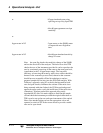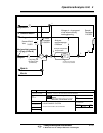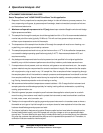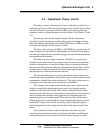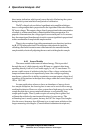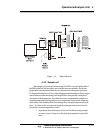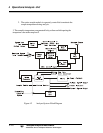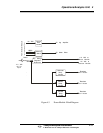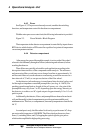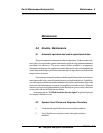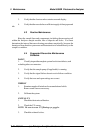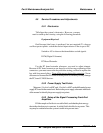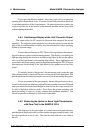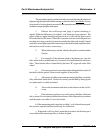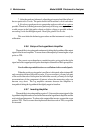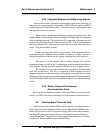
4–22
4 Operations/Analysis Unit
Teledyne Analytical Instruments
A Business Unit of Teledyne Electronic Technologies
4.4.3 Power
See Figure 4-3. The power to the analyzer unit, enables the switching
functions, and temperature control for the detector compartment.
With the microprocessor control unit, the following information is provided.
Figure 2-3. Power Module - Block Diagram
The temperature in the detector compartment is controlled by inputs from a
RTD device which feeds to a PID controller capable of set points of temperature
versus temperature readout.
4.4.4 Detector compartment
After energy has passed through the sample, it arrives at the filter wheel
where it is fed alternately through two filters (measuring and reference) before
reaching the detector.
These filters are specially selected for each application according to the
absorption characteristics of the compounds under analysis. The reference
and measuring filter waveforms occur along a baseline at approximately 16
milliseconds intervals; each reference or measuring waveform reoccurs at a
time interval of 33 mS, or one per revolution of the filter wheel.
At the detector, infrared energy is transformed into electrical pulses and
fed through an impedance-matched preamplifier (see dwg. A-14619). De-
pending upon the application, length of the cell spacer, etc., the gain of the
preamplifier may vary from 1 to 10, depending upon the energy intensity at
the detector, to achieve an AC signal output of approximately 0.1 to 1.0 volt
peak-to-peak.
Additionally, the detector, filters, and preamplifier are housed in an electri-
cally and thermally isolated compartment to provide maximum stability and
minimum noise. This box, or compartment, is normally temperature controlled at
46 °C.
As noted previously, the filter wheel is driven by a synchronous AC chop-
per motor which operates at 1800 RPM. The filter wheel performs two func-
tions: (1) switching filters, and (2) chopping the optical signal to give pulses
which can be amplified for high quality processing.



